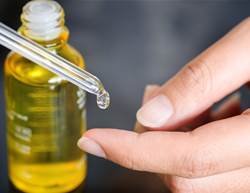If you could talk to your own skin, what do think it would say? Perhaps, “I’m thirsty – where’s the moisturiser?” Or, “More sunscreen, please!”
Your skin works hard for you, constantly renewing its cells – and while this process slows with age, there are things we can do to help it along. But first, it's important to understand where wrinkles come from.

ANATOMY OF A WRINKLE
First up, the building blocks of healthy, youthful-looking skin are collagen, which gives skin firmness; elastin, responsible for elasticity and ‘bounce’; and glycosaminoglycans (known as GAGs), which keep skin hydrated. From the age of 20, we start producing around one per cent less collagen per year; elastin production slows; and our skin thins and becomes more fragile. This ‘intrinsic’ ageing is inevitable but subtle.
However, there is also another type of ageing: ‘extrinsic’ ageing is the result of environmental and external damage. Think lifestyle habits, UV damage and exposure to pollution. It’s these factors that cause collagen and elastin to significantly diminish, resulting in sagging skin and wrinkles, along with brown spots, dryness and uneven skin tone.
WHAT YOU CAN DO TO PREVENT AGEING
It’s all about taking daily steps towards prevention! Shield your skin daily with a good SPF 50+ sunscreen, add an antioxidant, such as vitamin C serum, to bolster protection from UV rays and free radicals, plus try the following dermatologist-approved ingredients, cell-boosting treatments and complexion-perfecting tips, all proven to turn back the clock and fend off fine lines.

4 WAYS TO FEND OFF FINE LINES
1.REACH FOR RETINOIDS
Retinoids are vitamin A derivatives that include retinol and retinaldehyde (available over the counter) and trenitoin (a prescription medication). Scientifically proven to assist skin cell regulation, retinol is one of the most powerful topicals for preventing early signs of ageing, as well as helping to reduce the appearance of fine lines, wrinkles and discolouration. “Retinoids fight ageing, especially sun-related or photo-ageing, by promoting collagen production and also slowing collagen degradation,” says dermatologist Dr Karen Koh, from the Australasian College of Dermatologists.
2. PUT A RAINBOW ON YOUR PLATE
Studies have found that the polyphenols in green tea as well as lutein - a carotenoid found in leafy greens, broccoli and peas – can inhibit the natural enzymes that break down collagen. Meanwhile, phytonutrients in orange and yellow fruits and vegetables – oranges, pumpkin, carrots and orange capsicums – help improve skin vibrancy, while antioxidant-rich fruits – such as raspberries and pomegranates – contain ellagic acid, an antioxidant found to reduce collagen breakdown in animal studies.

3. POP ON PEPTIDES
Studies have found peptides noticeably improve the appearance of age or photo-damaged skin. “Peptides are composed of amino acids which can imitate the building blocks that make up collagen and elastin,” Dr Koh explains. “Some have been shown to stimulate collagen production. These can also assist in preventing or treating fine wrinkles.”
4. ZAP WRINKLES WITH LASERS
A combination of laser treatments with an effective skincare regimen will boost overall effectiveness of your skin maintenance program. Laser treatments are non-invasive and require minimal downtime. They use ultra-short and fast bursts of laser light energy to penetrate the surface of the skin and target problem areas. "Treatments deliver pulses of energy to the skin that creates a pressure wave," explains Dr Michelle Rodrigues, Senior Consultant Dermatologist at Chroma Dermatology in Melbourne. "This results in stimulation of collagen and elastin production, which firms and tightens the skin."
CynoSure laser treatment can provide collagen stimulation and skin revitalization. Visit www.picosure.com.au for more information.
Support from readers like you helps us do our best work. Go here to subscribe to Prevention now.








